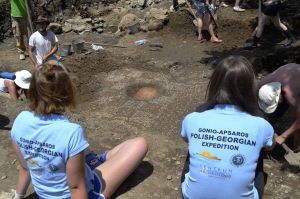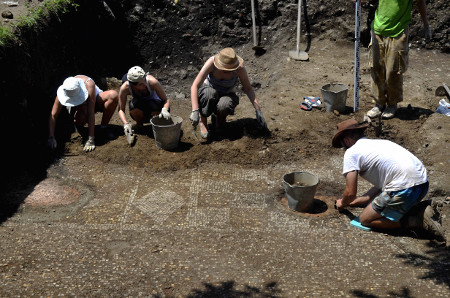A mosaic floor decorated with geometric motifs was discovered after just three weeks of work by a joint expedition from the University of Warsaw (Polish Centre of Mediterranean Archaeology and the Institute of Archaeology) at the Roman fort of Apsaros in modern Gonio.
The mosaic floor covered a large room (roughly 100 m2) in a bath that the Roman troops built for themselves in this distant location. The bath complex, which Polish archaeologists, students and volunteers have been uncovering since 2012, was for the Roman garrison a reminder of the civilized life they had left behind at home. The architecture is dated to the second half of the 1st century AD, probably the reign of the Flavian Emperor Vespasian.
Similar finds are rare in Georgia (in Ajara it is the first discovery of this kind), but other mosaic floors from the southern Caucasus are dated to a later period and were commissioned by the local elite.
The mission cooperates with the Gonio–Apsarus Museum and Sanctuary of Cultural Heritage Preservation Agency of Ajara, Georgia. The director on the Georgian side is Prof. Shota Mamuladze, on the Polish side Dr. Radosław Karasiewicz-Szczypiorski.
[Text based on information from Dr. Radosław Karasiewicz-Szczypiorski]
Zobacz film: Mosaic exploration from Gonio-Apsaros
[Photos: Oskar Kubrak]


